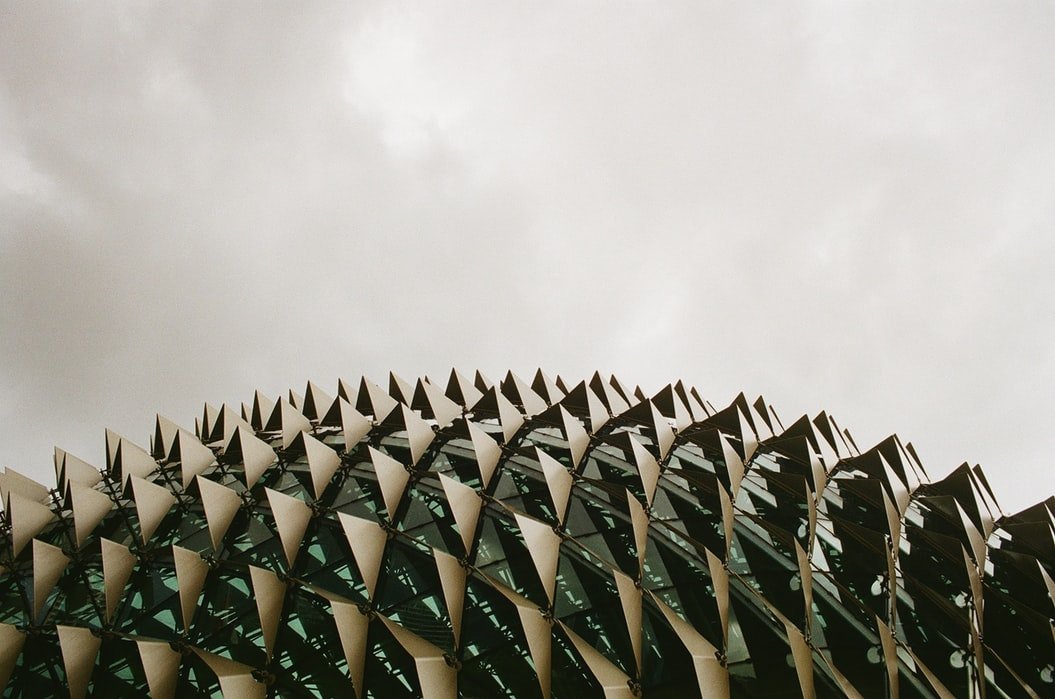Have you heard the saying ‘Nature works in mysterious ways?’ Nature in itself has an adaptive system that helps it to cope up with environmental changes. Solutions to a lot of our everyday issues can be derived from nature. Inspirations from nature have given us answers for complex issues in product design, medicine, science, and technology. This is true for architecture as well. A deep look at the elements and systems of nature can help us derive solutions to our design and planning issues.
This art of translating the elements of nature into built forms is known as biomimicry in architecture. With growing time and technology, we have realized that being associated with nature is the most beneficial to us. Hence, getting to know the potential of biomimicry and embracing it is now vital. Architecturally, the more nature-oriented we are, the more feasible becomes our design. Biomimicry adds a sense of sustainability as well as creativity to design.

The word biomimicry originates from the Greek term ‘bios’ and ‘mimesis’. While ‘bios’ means life, ‘mimesis’ translates to imitate. Thus, biomimicry in architecture is imitating the live nature to achieve sustainable solutions. This nature-inspired innovation has led to the amalgamation of design and nature. Human-designed solutions at times are crude. These solutions solve the problem for the time being but do not target the core of the issues. Peter Niewiarowski, a biologist at the Biomimicry Research and Innovation Center once said “The way biological systems solve problems is pretty different from the way engineered systems solve problems” Hence, we can say that the inspirations from nature are more feasible and trustworthy. Moreover, Biomimicry has given architecture an empathetic edge and a process to solve the design challenges in an environment-friendly manner. Besides, biomimicry architecture has raised awareness about the well-being of all the lives on our planet. Therefore, this helps us inculcate wisdom in our designs and heal the planet through built forms.
Role of Biomimicry in everyday architecture

The role of biomimicry architecture is not limited to mimicking nature into build forms. Its scope is much more advanced and involves designing an alternate approach. In order to develop this alternative approach, we will have to first understand the concept of biomimicry better.
De-stressing the environment
The climate is facing the ill effects of our interventions into nature. Construction has led to deforestation and the destruction of natural habitats. This is where biomimicry in architecture has an important role to play. Nature stands as our mentor and we can get solutions that have been tested and validated by the natural habitat. Thus, saving our planet and its ecology.
Generosity in Design
Mass construction has led to the degradation of air, water, and soil. Nature showcases us the use of passive energy systems and change of functions to adapt to the existing conditions. The various biomimicry in architecture examples, help us understand the use of circularity, sustainability, and regenerative design. Hence, this makes us well equipped to design generously for all and thereby create an environment that is conductive of life, just like nature.
Catalyzing the process of sustainability

There has been a lot of research into understanding how we have affected nature. But there are very few technologies that help us to reverse these adverse effects. We can say our R&D has been weak in preventing the destruction of ecology. On the other hand, we can see how nature and its forms adapt to the changing climates and create a beautiful coexistence. Thus, biomimicry in architecture can help to speed up the process of delivering sustainable designs. We do not have to reinvent things, we only have to observe the strategies on nature and incorporate them into our design processes.
Changing the perception
Innovation need not be confined to creating something new. We can say that biomimicry architecture implies that innovation is a new perception of old systems. Biomimicry preaches the wisdom that we need. Apart from the creation of new things it also helps us to focus on the existing systems with empathy and wisdom so as to conserve our heritage.
Intrigued by the magic of biomimicry? Part 2 of this will help shed more light on biomimicry in architecture through examples of buildings around the globe that in a way reflect the concept of biomimicry.

